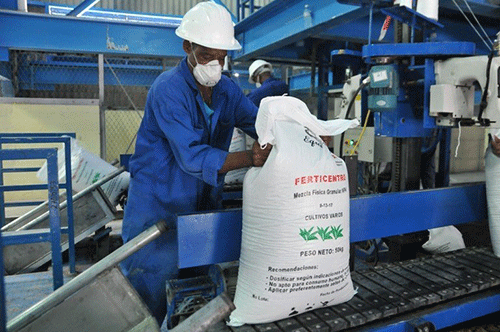GOBABIS – Thomas Abanga, the founder and chief executive officer of Abanga Farms & Food Systems, shared during the recent Omaheke Employment-Creation Conference that his company is in the final stages of setting up a fertiliser factory in the country.
Without disclosing where or in which town the factory will be established, Abanga confirmed that the fertiliser plant will open its doors to local and international consumers this year. It will employ more than 400 Namibians.
Last year, the Ghana-based Abanga Farms & Food Systems partnered with local meat-producing and exporting company Meatco to become the first West African company to ship Namibian meat from north of the red line to the Ghanaian market.
The Ghanaian businessman furthermore shared during the recently-concluded week-long conference at Gobabis that his company is determined to tap further into the Namibian agriculture sector. The construction of a fertiliser factory will thus be their next biggest investment here.
“I’m glad that after more than 30 years of Namibia’s independence, my company and I became the first people to move Namibian meat to the Ghanaian market, and within the West and East African markets as well. But Namibia’s agricultural potential remains fully untapped, and there is still more work to do around the whole value chain system. That’s why I must share here that together with a local partner, we will soon be opening a fertiliser factory in Namibia,” he enthused.
“The factory will employ over 400 people across its various production phases. We already have engineers from Europe helping us with the process, as the plan is to open the doors this year. All these steps are part of beefing up the agricultural value chain, and lessening Africa’s dependence on Europe for everything. Africa has no reason to depend on Europe for agricultural products. We can and must do it ourselves as a continent, and Namibia must be part of those spearheading that change on the continent”, Abanga continued.
When producing fertiliser, millions of tonnes of air, natural gas and mined ores are transformed into plant nutrition products based on the three essential nutrients, namely nitrogen, phosphorus and potassium.
For nitrogen-based fertilisers, the largest product group, the process starts by mixing nitrogen from the air with hydrogen from natural gas at high temperatures and pressure to create ammonia.
The ammonia is used to make nitric acid, with which it is then mixed to produce nitrate fertilisers such as ammonium nitrate (AN). Ammonia may also be mixed with liquid carbon dioxide to create urea. Both these products can be further mixed with water to form UAN (urea ammonium nitrate) solutions.
Meanwhile, phosphorus-based fertilisers are produced from mined ores. Phosphate rock is primarily treated with sulphuric acid to produce phosphoric acid, which is either concentrated or mixed with ammonia to make a range of phosphate fertilisers.
Potassium is the third major plant and crop nutrient. Potassium-based fertilisers are also produced from mined ores. Several chemical processes can be used to convert the potash rock into plant food, including potassium chloride, sulphate and nitrate.
-ohembapu@nepc.com.na


